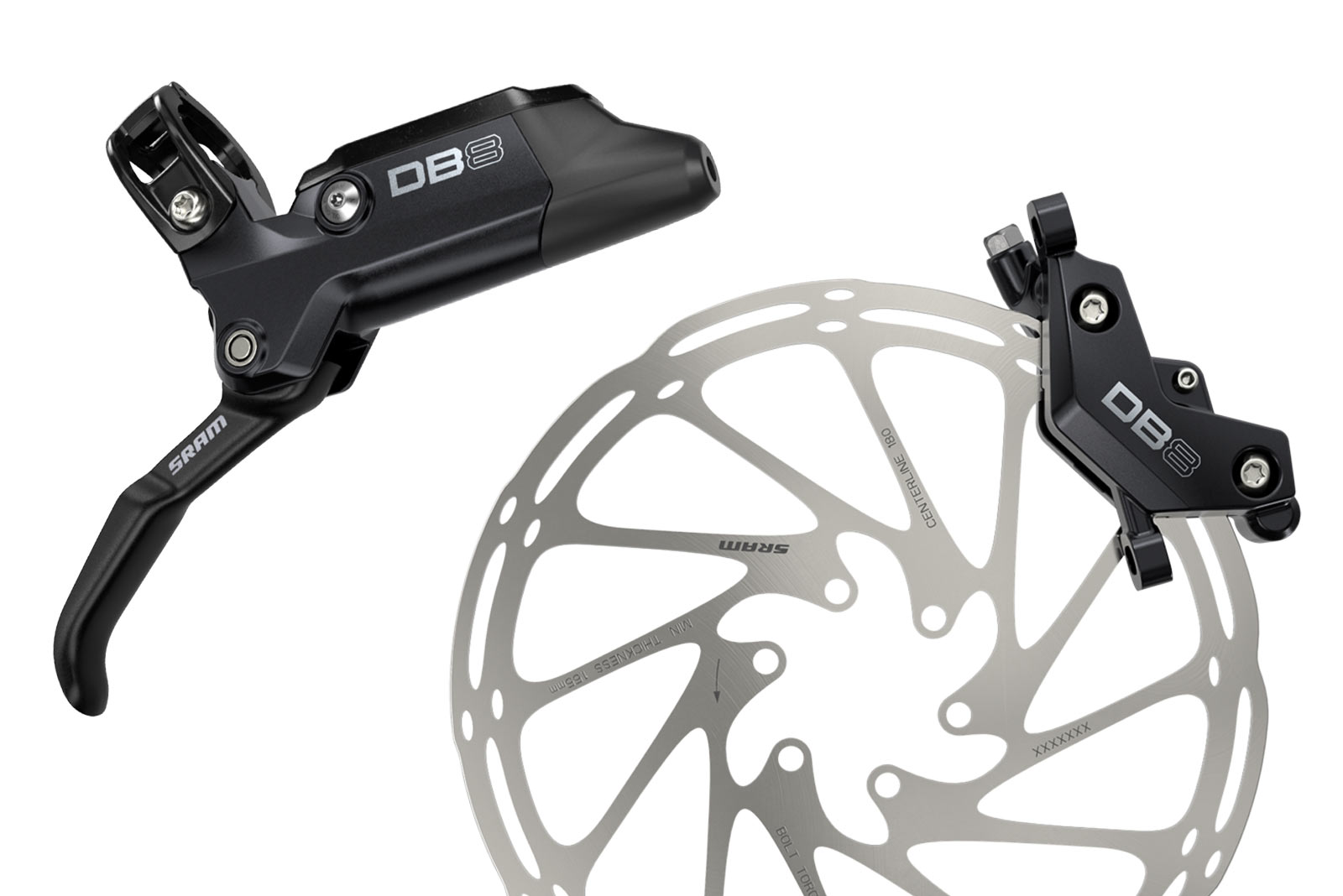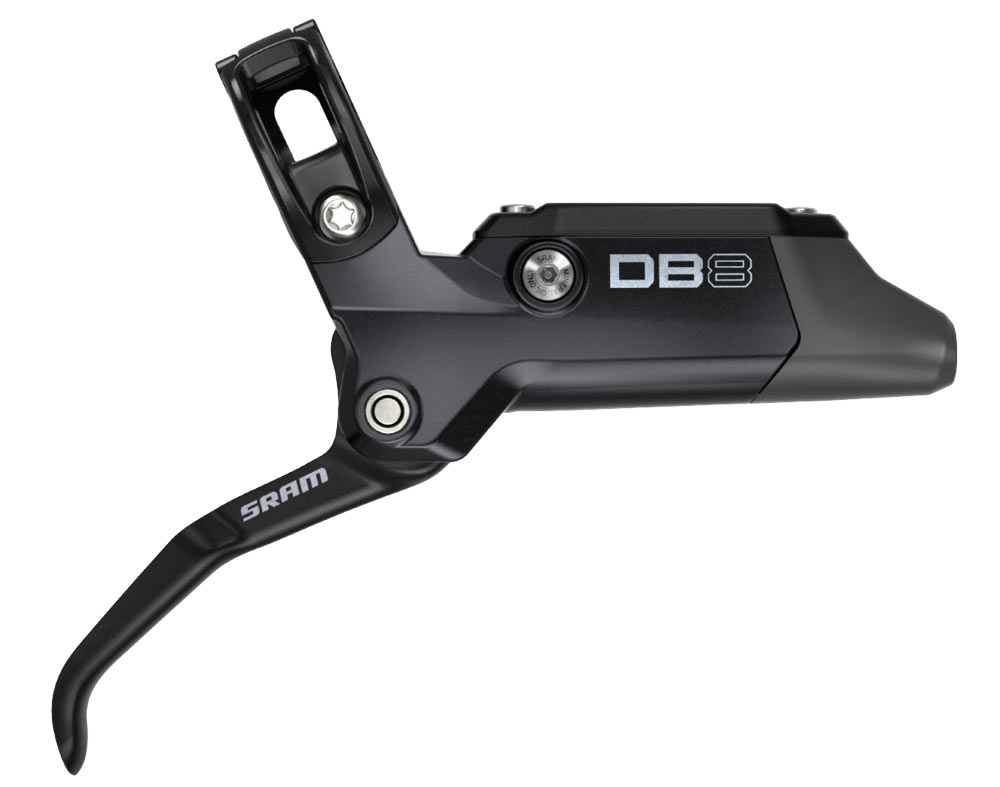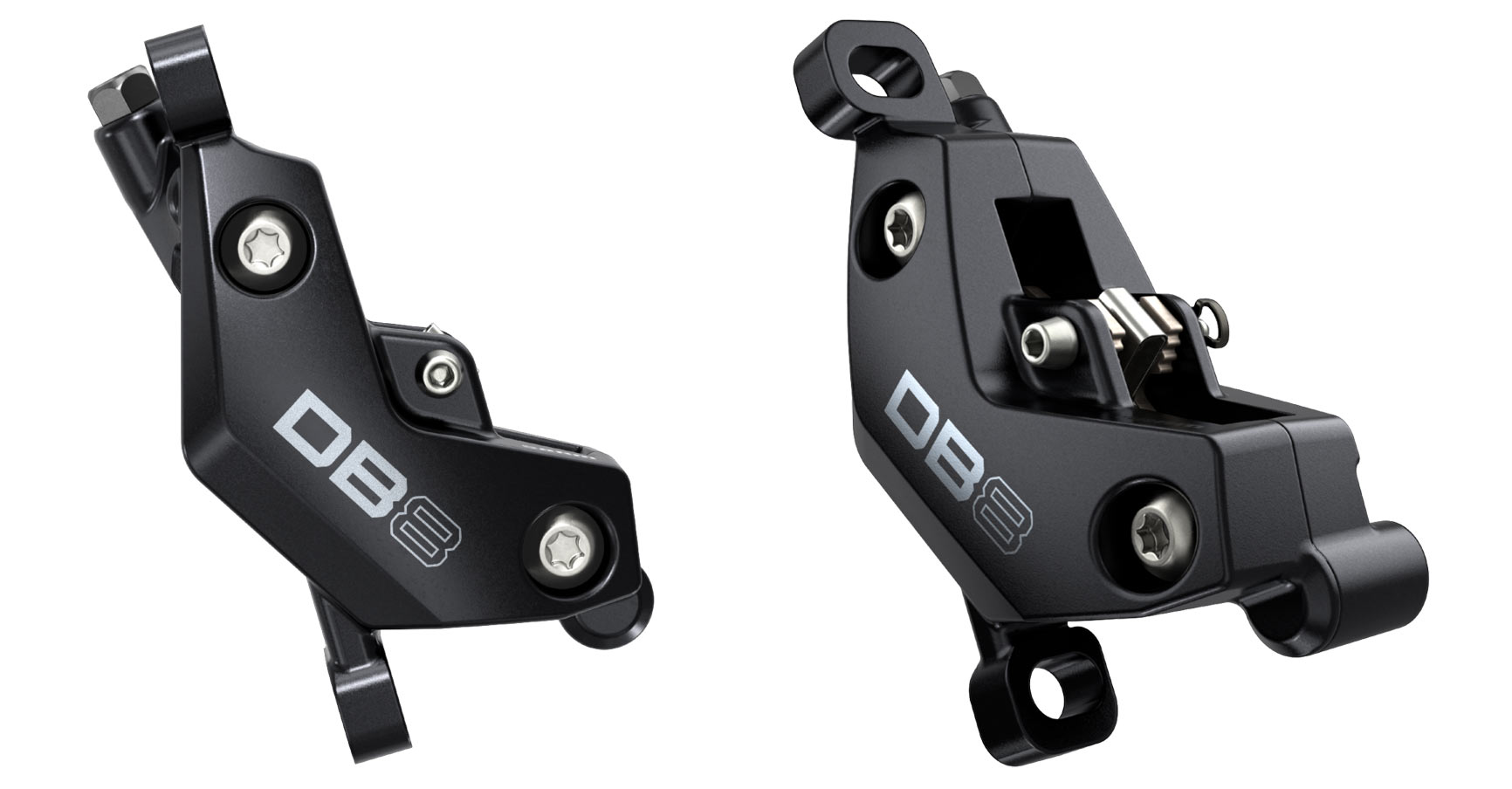The all-new SRAM DB8 mountain bike disc brakes are budget-friendly CODES, sharing the same brake pads and overall design, but with a few key changes.
At $137 per wheel, the DB8 is $30 less expensive than the base-level CODE R. For that, you get a stamped alloy lever (versus forged) and tooled reach adjust (versus tool-free). You’ll have to upgrade to the CODE RSC for pad contact adjust, bearing pivots (versus bushings)
The big difference is the brake fluid used. SRAM’s brakes have always been DOT 5.1, but this one’s running Mineral Oil. So, are they rolling back years of design and marketing? No, not at all.
“At this price point, we knew the user was looking for a longer service interval and absolute simplicity,” SRAM MTB PR manager Chris Mandell told us. “These are a product you’ll primarily see coming as OEM spec on bikes.”
Meaning, they’re not aimed at higher-end riders looking for an upgrade, though we could see them being a decent option for anyone seeking a solid 4-piston brake. In fact, they say the DB8 should deliver about 10% less power than a current CODE brake, but feel very similar.
So, why stick to DOT fluid for CODE, G2, etc.?
“Because of the temperature ranges and composition of DOT fluid, the seals we can use are lower friction and higher performance than what we could use for a mineral oil brake,” Mandell says.
He also pointed us to their recent videos about brakes, which tell their story and give a bigger picture overview of brakes and this first one really explains the key differences between the two fluids and how they impact design and materials…and, ultimately, performance:
…and this one for setup, along with an explanation for that dreaded squeal:
Both videos are absolutely worth a watch.


